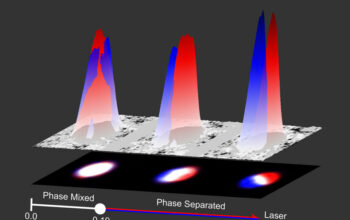The quest for superior battery performance is a focal point of modern energy technology. Among various innovative materials being explored, graphene has emerged as a frontrunner, captivating researchers and engineers alike. The remarkable properties of graphene—its high electrical conductivity, exceptional mechanical strength, and large surface area—yield significant advantages when applied to battery technology. In this discourse, we shall delve into the multifaceted benefits of graphene-coated batteries and unravel the underlying mechanics that contribute to their enhanced performance.
The fundamental architecture of batteries dictates their efficiency and longevity. Conventional batteries, dominated by lithium-ion chemistry, face inherent limitations. These limitations often manifest as reduced energy density and sluggish charging times, which stymie the quest for longer-lasting and quicker-recharging energy systems. The integration of graphene in battery design addresses these deficiencies, thereby providing a compelling rationale for its widespread investigation.
Graphene, a two-dimensional allotrope of carbon, consists of a single layer of carbon atoms arranged in a hexagonal lattice. Its extraordinary electrical conductivity facilitates rapid electron transport, a critical characteristic for any energy storage system. Enhanced ionic mobility within the battery’s electrolyte further complements this feature, culminating in decreased internal resistance. As a result, graphene-coated batteries exhibit improved energy transfer mechanisms, enabling faster charging times while maintaining high energy capacity.
This integration does not merely enhance operational speed; it also bolsters the battery’s overall life cycle. Traditional batteries often undergo structural degradation due to repeated charge-discharge cycles, leading to diminished capacity over time. Graphene, with its exceptional mechanical resilience, reinforces the structural integrity of battery components. By mitigating the detrimental effects of wear and degradation, graphene-coating serves to prolong battery life, offering a sustainable solution to energy storage challenges.
The surface area provided by graphene also plays a pivotal role in this advanced design. A larger surface area means more active sites available for electrochemical reactions. In practice, this translates to higher energy densities, permitting batteries to store more energy in a compact form. Such a capability is particularly advantageous for applications in electric vehicles and consumer electronics, where space and weight constraints are paramount considerations.
Moreover, the synergistic effects of incorporating graphene can be observed when it is combined with other materials. For instance, the hybridization of graphene with lithium or silicon compounds can lead to further enhancements in performance. Graphene can effectively mitigate the volumetric expansion associated with silicon during lithium insertion, which is a notable challenge in lithium-ion battery chemistry. The formation of composite electrodes featuring graphene can, therefore, help to harness the superior capacity of silicon while availing the mechanical robustness of graphene, yielding batteries with both enhanced capacity and longevity.
Another aspect warranting attention is the thermal management capabilities offered by graphene. Thermal stability is crucial in battery operation, especially in high-performance contexts. Batteries that generate excessive heat risk encountering thermal runaway, leading to catastrophic failure. The excellent thermal conductivity of graphene allows for efficient heat dissipation, ensuring operational stability and enhancing safety. By regulating temperature within optimal ranges, graphene-coated batteries can function reliably even under strenuous conditions.
Despite the plethora of advantages, the practical application of graphene in battery technology is not without challenges. The production of high-quality graphene at scale remains fraught with difficulties. Current production methods can be costly and time-consuming, limiting widespread adoption. Additionally, the integration of graphene into existing battery manufacturing processes necessitates careful consideration, as it may alter traditional practices and introduce complexity into the manufacturing workflow.
The future of battery technology appears inextricably linked to the ongoing advancements in graphene research. Scientists are exploring various synthesis methods, such as chemical vapor deposition and liquid-phase exfoliation, to improve production techniques. Furthermore, the exploration of novel graphene derivatives and composites could yield batteries that transcend current performance benchmarks. Innovations in nanotechnology may also facilitate the integration of graphene at nano-scale dimensions, enhancing its efficacy and providing unique functionalities in battery applications.
The fascination with graphene-coated batteries stems not only from their immediate performance benefits but also from their potential to revolutionize energy storage paradigms. In an era marked by increasing demands for energy efficiency and sustainability, the convergence of advanced materials science with battery technology is ushering in a new age of innovation. The prospect of lighter, more powerful, and longer-lasting energy storage devices could ultimately transform sectors ranging from electric mobility to renewable energy integration.
In conclusion, the utilization of graphene in battery technology stands as a testament to the innovative spirit driving modern physics and engineering. By augmenting battery performance through enhanced conductivity, longevity, and thermal management, graphene holds the potential to redefine our relationship with energy storage. While challenges remain in its practical implementation, the trajectory of research indicates a future where graphene-coated batteries could play a central role in global energy solutions. As exploration into this realm continues, the deeper mysteries of graphene’s capabilities may yet reveal solutions to some of the most pressing energy challenges of our time.










